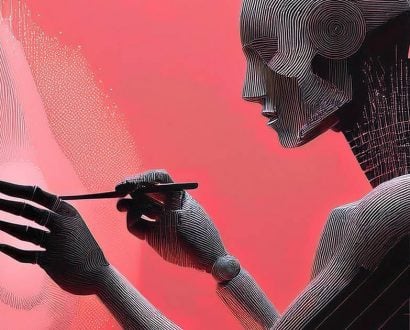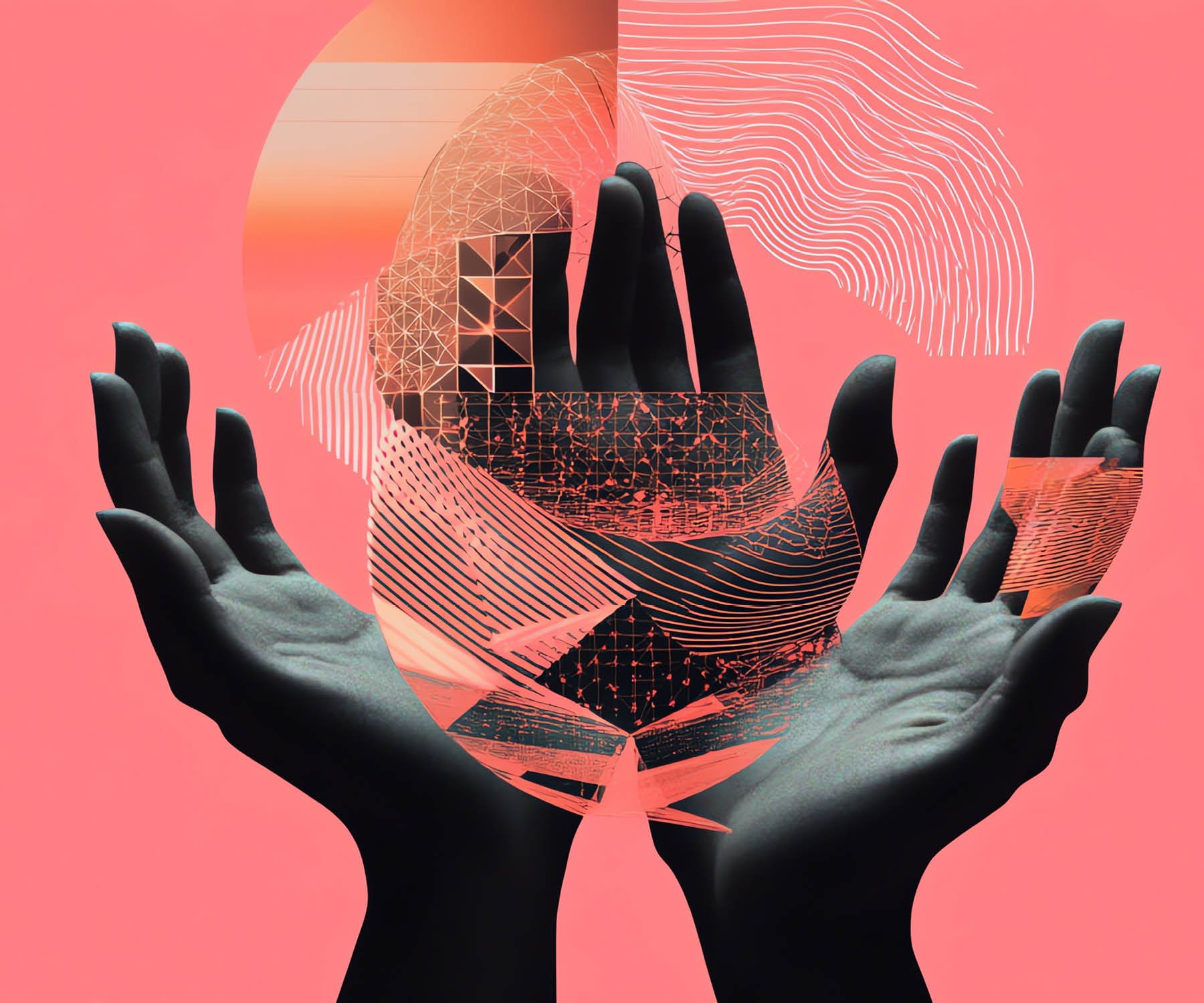How to enhance human creativity with AI

For many leaders, the ‘AI takeover’ has led to much uncertainty and anxiety about the future of humanity, which is completely understandable.
Since OpenAI’s ChatGPT rolled out in November 2022, we’ve seen our social media platforms, inboxes and news feeds increasingly flooded with generic, robotic and lifeless content, thanks to humans handing over their efforts to AI tools.
We’ve heard the phrase ‘Just ask ChatGPT’ uttered semi-regularly in the same way we used to say ‘Google it’, thanks to the instant and clear results provided.
And we’ve shared stories of overwhelm and awe about various AI tools now available on the market, thanks to AI developers continually pumping out new and shiny things to experiment with.
Right now, it might feel like our sense of human creativity and critical thinking are being replaced. But that doesn’t need to be the case. We do have a choice in the matter. Our creative and critical-thinking skills can actually be enhanced if we choose the right perspective on how to utilize AI and establish healthy habits now.
AI should be used as creative fuel
There’s no doubt about it: AI is undeniably powerful when it comes to processing large amounts of data, generating drafts and analyzing trends. It’s also incredibly efficient when dealing with repetitive tasks, like producing outlines or pulling insights from mountains of information.
I personally use ChatGPT regularly to wade through my workshop notes, keynote materials, ideas or musings and it helps me to produce article outlines, agendas, marketing strategies and more.
For me, this makes AI extremely useful for helping me push through procrastination. It removes that barrier to entry, enabling me to get started when I’m otherwise feeling overwhelmed or brain dead when starting a project.
And you know what? Every time ChatGPT helps me kick-start the process, I get this amazing dose of dopamine. Look at that instant output! Look at those ideas! Look at that structure!

There’s no doubt about it, AI is undeniably powerful when it comes to processing large amounts of data, generating drafts and analyzing trends.
The problem is that the majority of people stop there. In that initial moment of excitement, they go ahead and run with the very first thing AI pumps out. Without any analysis. Without checking if the brand voice is any good. And without critiquing the output.
But this initial stage should only be seen as the beginning of the creative process, not a replacement for it. It simply lifts that barrier to entry.
Then you can use your experience and expertise to create some real magic. Then you can expand on those plans and strategies. Then you can challenge and critique what AI gives you and decide whether you continue with prompts or take over the project manually.
Rather than using up your creative juices on that white screen of death, you can preserve your creativity and have much more fun diving into projects where you can truly shine.
AI’s missing ingredient – the human touch
By now, you’ve probably noticed that AI-generated content lacks emotional intuition and energy. The tools simply don’t understand the nuances of a heartfelt story or why one well-written speech might move someone to tears or lead to a long-term business relationship.
This is why you’re seeing all these lifeless, skeletal articles and LinkedIn posts. The bones of a good message are all there. But there’s no blood (or passion) circulating. The stories haven’t been ‘fleshed out’ enough.
It’s often because the people behind the bots haven’t taken the time to add human opinions and remarks, client case studies, facts and figures, and relatable stories. And many are using AI-generated templates or asking AI to reproduce the formula of high-engaging posts in an attempt to go viral.
From my experience, these people either don’t know what they don’t know or they’ve been caught up in ‘AI Shiny Object Syndrome’.
AI tools simply don’t understand the nuances of a heartfelt story or why one well-written speech might move someone to tears or lead to a long-term business relationship.
This is why I’m so concerned when I hear about whole copywriting and marketing teams being sacked and replaced by AI. It makes me sad because these are the human experts who know how to produce quality content.
These are the people who could actually optimize AI tools, knowing what they know. With the right training in AI tools, their human creativity could absolutely go gangbusters.
I also regularly come across creative leaders – including photographers, artists and videographers – who are worried about AI replacing their creativity and knowledge. I tell them all there’s an opportunity here to use their expertise to make AI work for them. But only if they want to.
There will always be humans out there who want to buy creations produced by humans. And if these creative geniuses are one day in the minority, well that’s a great opportunity to increase their prices.
Approach ‘agentic AI’ with caution
If you haven’t come across it yet, agentic AI is predicted to be the next big thing coming to the business world.
Ultimately, it involves creating a whole series of agents (read: bots) that are each designed to carry out specific tasks. Like a team of virtual assistants, in the true sense of the phrase, working together.
These bots don’t just perform one job within your company. They all collaborate to complete complex workflows, with the aim of replacing what our human brains would do for certain repetitive or predictable tasks.
What will the future hold if we succumb to these agents and simply allow them to run the whole company?
I’ve seen a demonstration. It’s very cool. But it’s also very scary. What will the future hold if we succumb to these agents and simply allow them to run the whole company? Allow them to replace our creativity for the sake of productivity?
Once again, we have a choice here. We mustn’t feel the pressure to hand over all creative and critical thinking to AI. Humans still need to manually drive the processes. We still need to be checking they’re on track and not running off on their own tangent.
And most importantly, what happens if someone ‘pulls the plug’? What happens if your company is the victim of a scam, sham, power failure, glitch or some other technical demon, and you’ve found yourself completely reliant upon these bots?
That’s when the human brain power needs to be fired up and take action. And hopefully the expert staff in your organization haven’t been given the sack somewhere along the way as a cost-cutting measure because AI was seen to be an all-knowing power and humans were no longer needed.
Final words from a fellow human CEO
While I love AI in some ways, in other ways I absolutely hate it.
I love how it supports me with projects when I have a limited supply of time or headspace. And I love watching the ‘aha’ moments when my students learn how to use AI as a knowledgeable sidekick, rather than allowing it to take over as the poorly trained hero of their story.
But I hate seeing the constant flurry of AI tool development – tools that are meant to be helping humans but are actually replacing them left, right and center. Why do we want that?
You have a choice right now. Will you let AI amplify your creativity or allow it to take it away?